AudioCulture
The noisy library of New Zealand music
Te pātaka korihi o ngā puoro o Aotearoa
Peter Dawkins
The standard was very high and names like Alan Galbraith, Howard Gable and Nick Karavais appear on countless iconic local recordings. And then there was Peter Dawkins ...
The New Nadir
By August 1967 The New Nadir were recording at a studio near Zurich Switzerland. Five tunes were co-written by the band in the few months they had played together. Drummer Peter Dawkins: "Everyone thought [the name] was Indian so we made the most of it by cooking up a jazz-rock sound with Indian sounds – things like ‘Tobacco Road’ with a raga in the middle of it."
The band called it raga rock and gained a residency in Zurich, a 12-hour day from noon till midnight with an hour between sets. Guitarist Ed Carter had attended the Ali Akbar Khan school of Indian music at Berkeley California: "He taught the basics to Gary and me during the hour off and then we would attempt it in the hour on."
He bought his first drums with 100 pounds won in a Twist dance marathon at Temuka that lasted 108 hours, 55 minutes.
Dawkins and bass player Gary Thain had left Christchurch New Zealand about a year earlier on the boat to London, both veterans of Christchurch band The Strangers. Dawkins had previously played drums in his hometown of Timaru with The Falcons, inspired by the movie The Gene Krupa Story. He bought his first drums with 100 pounds won in a Twist dance marathon at Temuka that lasted 108 hours, 55 minutes. By June 1966 Dawkins, aged 19, was sailing for England with a new band called Me And The Others, and a solid soul and blues set list that included The Temptations' ‘My Girl’, and Sam and Dave's ‘Hold On I'm Coming’ and ‘You Don't Know Like I Know’.
They failed auditions for Dick Rowe at the Decca label and for Island Records boss Chris Blackwell, before they ran into The Pretty Things drummer Viv Prince, who landed them a month at the Knuckles Club in Soho on the strength of a good word from Auckland singer Tommy Adderley.
The band turned down backing Engelbert Humperdinck (Dawkins: "No thanks, not anyone with a name like that"), and toured England and Scotland. At Regent Sound Studios in London they recorded a Dawkins original, ‘Even Green Ones’, and five soul covers including Otis Redding's ‘I Can't Turn You Loose’. By Christmas 1966, Me And The Others were playing in Munich and then Stuttgart, where the group called it quits in early 1967. The two guitarists headed back to Christchurch.
Ed Carter arrived next, looking for the drummer and bass player he had heard about. Apart from his Ali Akbar Khan studies he had played with Steve Miller, Etta James, Linda Ronstadt and Emmylou Harris.
They performed alongside Ten Years After, the Jeff Beck Group with Rod Stewart, and The Faces.
The New Nadir toured their new repertoire through Switzerland, Germany and France, where they played the Omnibus in Paris. Dawkins: "We followed Jimi Hendrix and by all reports went down a lot better than his group." Back in London they played the Marquee, Blazers, Bag Of Nails, The Scotch of St James and other clubs with a mixture of soul and originals. They performed alongside Ten Years After, the Jeff Beck Group with Rod Stewart, and The Faces. They scored a regular gig each month at The Speakeasy and Hendrix twice got up to jam. Dawkins: "Hendrix said to us could he play guitar? And I said could he play guitar! And he got up and played left-handed guitar upside down and made it talk."
The New Nadir signed a deal with Polydor and went into the studio with A&R director Andrew Black. "He did not appear to be into it and the single session for ‘I Need A Good Vacation’ and ‘Run The Risk’ was scrapped. We were then put on hold so you can imagine how disappointed we were."
Then within months Dawkins was out and Californian session player Mike Kowalski was brought in on drums. Kowalski had played in bands backing Sonny and Cher, Little Anthony and Etta James. The new line-up lasted a few gigs before Kowalski returned to California with Carter where both played for many years in The Beach Boys. Thain appeared with the Keef Hartley Band before joining Uriah Heep. Dawkins took a holiday in Morocco and returned to Wellington as a staff producer at HMV.
HMV
The Wakefield Street studio opposite Pigeon Park in central Wellington had recorded direct to 78rpm disc until 1959, when the first magnetic tape recorders were installed. In 1966 it upgraded from bouncing between two mono tape decks to bouncing tracks between two Ampex stereo decks. A stereo mixing desk was built to allow six or eight overdubs before tape hiss took over.
By 1969 the HMV studio had upgraded to 4-track and doubled annual output with its first full time producer, Howard Gable, conjuring up hits for The Fourmyula, Quincy Conserve, The Simple Image, Mr. Lee Grant and Allison Durbin. After Gable's departure to Australia, Dawkins took over at Wakefield Street.
Dawkins: "I was doing everything from pop music to piano accordion and pipe bands. Anything that needed to be recorded, I would supervise and organise the recording. If it was a Highland pipe band my input wouldn't be that great except to make sure it was done and done on budget. But if it was a pop thing like Shane or somebody like that I would have a lot to do with the arrangement and the picking of the material and direction in the studio."
Alan Galbraith was a producer with Dawkins at HMV and CBS Australia. "Our main task was to pick the right songs for the artists we worked with. That meant songs we thought could be hits if they were presented the right way."
They were among the last of the old-school producers. "We were quite dominating in our approach to artists in that we would choose the material, the arrangements, even the cover artwork."
'Saint Paul’ by Shane was Dawkins' first No.1 in New Zealand.
The first signing by Dawkins was Wellington band Tom Thumb, who recorded a North American Indian love chant (‘Witchi Tai To’), Beatles (‘Hey Bulldog’), and Four Tops covers (‘If I Were A Carpenter’), which charted regionally. Dawkins impressed guitarist Rick White as a very, very good drummer. "He sat down with [drummer] Tom Swainson and said I want the bass drum happening. Before that he was all top. I can remember Dawkins tying one of his hands behind his back to practise and saying use your foot."
‘Saint Paul’ by Shane was Dawkins' first No.1 in New Zealand. A song written by Grand Funk Railroad manager Terry Knight that cashed in on rumours about the death of Paul McCartney, it stayed at No.1 for six weeks during mid 1969.
Dawkins regarded it as a 4-track masterpiece: "The amount of recording we were able to capture with a 4-track was nothing short of miraculous. It was seeded with Beatles songs and the public loved it."
Shane remembers ‘Saint Paul’ as a challenge to record. "There were effects, an orchestra with strings, brass etc. For the la-la-la chorus at the end we had to press-gang the entire staff from HMV into the studio. From the accountants to the warehouse staff, sales reps, they were all there. We wound up the reverb and that was our choir – all recorded at the same time as I laid down the lead vocal."
Available effects included tape echo using the playback head of a tape recorder, plate echo and tone equalisers. ‘Saint Paul’ featured flanging, a variation of phasing named after slowing a tape spool by touching its flange.
Dawkins: "We had good reverbs and some of the [echo] plates were probably equal to anything electronic that you get today. It was a question of playing around with the sounds. We were trying things like backwards tapes and playing with tapes more than what you do today, where you can create any sort of effect you want electronically."
Experimenting with sounds was all-important. "We got a limiter one day and we used it for everything but limiting. We used it as an effect. It was the same with the old Dolby units – someone sent us one for a demonstration and we didn't use it to cut the tape noise down but as an effect on guitar." Some guitars were replayed through the Hammond organ’s rotating Leslie speaker or replayed through the studio for a big-room echo.
The Fourmyula returned from England intent on maximum separation of instruments for recording. Dawkins: "We tried building a drum booth around [the drums] with an old mattress and all sorts of things and getting a very dry dead sound and throwing in all sorts of effects – but still working with 4-track so it was fairly limited."
‘Nature’ started as another experiment, a studio exercise never intended for release or live performance.
They used boxes and shoes as percussion; an autoharp sound was made by recording a piano and playing back the tape at double speed, which raised everything an octave. Drums were replayed at a slower speed to fatten their fidelity.
Their biggest hit, ‘Nature’ started as another experiment, a studio exercise never intended for release or live performance. Dawkins completed it and overruled the band, who didn't want it released.
Composer Wayne Mason: "We used a wood organ lid as the kick drum, the sole of a leather shoe as the hi-hat, and a full box of matches for the snare drum. People were laughing deliriously in the control room as we took off our shoes and beat them with a stick trying to find the right sound."
Working with 4-track tape recorders added another challenge. Dawkins: "We didn't have a lot of choice with the final mix because with 4-track we were mixing a lot as we went. We would commit the rhythm section all to one track and so the balances couldn't really be altered later. We were working very much with a small group of players who understood each other – they weren't just session people – and from that you could pretty well ascertain if you needed more piano or if you needed less whatever. But you couldn't fine tune it to the extent that you later could and play around with a bass drum for half an hour."
"I was working on a session and they wheeled in the 8-track in the middle of the session, unplugged the 4-track and plugged in the 8-track. Unfortunately we found by the time we split up the strings and the brass and a couple other things we didn't really have a lot more flexibility."
Dawkins flew up drummer Richard James Burgess, aged 22, from Christchurch to join Quincy Conserve, the HMV studio band since 1968. Burgess played behind other HMV acts including Craig Scott (‘Let's Get A Little Sentimental’), Hogsnort Rupert (‘Pretty Girl’), Shane (Straight, Straight, Straight) and Suzanne. They would record an album in a day or so.
Burgess credited Dawkins with many of the qualities of the best producers. "I had no idea he was a drummer and that speaks highly of him as a producer in that he didn't meddle with my playing. He was always encouraging and complimentary, which gave me great confidence at a relatively young age."
Dawkins had an ear for a hit and could shape the potential of a raw song into a recording with hooks that captured people.
Recording sessions went smoothly and produced results in the time allocated. Dawkins had an ear for a hit and could shape the potential of a raw song into a recording with hooks that captured people. Burgess, who has since written textbooks on music production, was impressed:
“Peter would usually hit the talkback button and dispense some words of advice as we were running the track down or between takes, but occasionally he would hit the talkback button and say 'I'm coming out'. You knew then there was a more serious issue. One time I was having difficulty with some very fast funky 16th-note kick-drum parts. Peter hit the button and said, 'I'm coming out'. But he came over and chatted in the friendliest and kindest way – which was the perfect thing to do. He could obviously tell I was stressing over this part and he put me at ease so effectively that we nailed it on the next take or so.”
‘Saint Paul’ was followed by more No.1s with ‘Nature’ by The Fourmyula, ‘Star Crossed Lovers’ by Craig Scott, and ‘Pretty Girl’ by Hogsnort Rupert. Other Top 20 productions from Dawkins include Bunny Walters (‘Brandy’), Headband (‘The Ballad Of Jacques La Mere’, and ‘Good Morning Mr. Rock 'N 'Roll’), and BLERTA (‘Dance Around The World’). Regional hits were produced with Tom Thumb and Quincy Conserve, Christchurch bands Revival and Chapta, and Lutha from Dunedin.
Dawkins and Craig Scott checked stacks of 45rpm demos from writers including Neil Sedaka and The Easybeats’ Harry Vanda and George Young, to find Top 10 follow-ups including ‘Let's Get A Little Sentimental’, ‘Smiley’, and ‘Ciao Baby’. Dawkins: "We listened to the verse through the bridge, and then we made a decision."
Another Dawkins inspiration teamed Shane up with a session band called Zonk! and another American Indian chant, this one called ‘Heya’, composed by J.J. Light (a fictitious Indian name). Released during 1970 as a mystery group , local radio stations held contests to guess their identities. Zonk! members included drummer Bruno Lawrence and vocalists Craig Scott and Alan Galbraith. ‘Heya’ was a “newcomers” pick in Cashbox magazine in the United States. Interest in New York to book the band disappeared after Shane sailed for London and a two-week tour of Germany, where ‘Saint Paul’ had sold well.
Production runs at HMV typically ranged from 300 to 30,000 copies. Dawkins: "The biggest was Hogsnort Rupert's ‘Pretty Girl’. We sold 55,000 copies. I often said it sold on a wink because they did Studio One and the camera hit Alec Wishart when he said, ‘come on my lover give us a kiss’ and he winked. The record just went berserk the next day, they couldn't press enough of it."
Australia
In early 1972 Dawkins transferred to EMI Australia with an extra 10 dollars a week, lifting his wage to $100 a week. The Sydney studio had upgraded to 8-track in 1969, and was about to install an EMI Abbey Road console with 16-track. As in New Zealand, Dawkins was soon in the domestic charts with both established performers and unknowns who would become household names. Galbraith: "Our focus was on local hits with local acts. If something got an overseas release that was a bonus."
Dawkins remade a better version of David Cassidy's ‘Rock Me Baby’ with Johnny Farnham, which Farnham followed with ‘Don't You Know It's Magic’ and ‘Everything Is Out Of Season’. Sydney act The Ormsby Brothers charted No.5 with ‘You Don't Own Me’, originally recorded by Lesley Gore. He produced Russell Morris on ‘Wings Of An Eagle’ which charted at No.9 in national charts.
During 1973 Dawkins produced country singer Slim Dusty's biggest hit album of the time The Lights On The Hill, and Ross Ryan with I Am Pegasus, which topped most Australian state charts.
Albums produced for Spectrum and Ariel (featuring ex-Chants R&B guitarist Mike Rudd from Christchurch) include A Strange Fantastic Dream and Rock & Roll Scars. Dawkins: "I used to send everything I did overseas to see if anybody wanted to pick it up for foreign release. The first time I ever got a response was with Ariel. They were so keen at EMI that they invited us over to Abbey Road studios to record the band's second album Rock & Roll Scars."
Dawkins, a Pink Floyd fan, rated A Strange Fantastic Dream as his favourite all-time album. "It was pretty revolutionary since we used a Moog synthesiser and all sorts of things like that. I can play it after all these years and still enjoy it."
During 1973 Ariel and Tamam Shud also performed on The Star Suite in a rare venture by Dawkins into creating and co-writing an album – a progressive rock instrumental with the four tracks named after the elements.
Mid-decade Dawkins switched labels to Festival, producing the Million Dollar Bill album for Billy Thorpe before joining CBS, who were desperate for local acts. Dawkins went around the clubs and signed up Ariel, Dragon and Air Supply. Dragon was signed on first hearing at a wine bar in Sydney. "You don't do it that often in a career but sometimes you just have to. With Dragon I heard one song after another, every one a potential hit."
Dragon keyboardist and composer Paul Hewson would supply the first hits with ‘This Time’, ‘Get That Jive’ (featuring slowed-down guitars), and the Sunshine and Running Free albums. Dawkins produced two albums for Air Supply ("the first time I ever signed a band from a tape") including Love And Other Bruises before they charted in the United States.
Dragon would also provide Dawkins with his biggest sellers, with ‘April Sun In Cuba’ charting at No.2 in Australia and No.9 in New Zealand in 1978.
Dragon would also provide Dawkins with his biggest sellers, with ‘April Sun In Cuba’ charting at No.2 in Australia and No.9 in New Zealand in 1978. Later in the year their O Zambesi album produced the No.1 single ‘Are You Old Enough’.
Dragon guitarist Robert Taylor says the Sunshine album was recorded in two weeks with Dawkins playing a very big role. "We didn't originally have the introduction to ‘This Time’ and Peter suggested we take a section out from the middle and put it at the start of the song. We said fine. He had a structural sense that we listened to and followed." Recording sessions typically started with the rhythm section and then a few overdubs.
"Right up till ‘Body And The Beat’ we did four or five takes of the rhythm section and if it was in tune and we were happy with it we would proceed to layer it. For instance ‘Are You Old Enough’ has a basic electric rhythm guitar, then acoustic rhythm guitar, and then two lead guitar overdubs – one harmony part done on slide guitar, and one harmony on normal picked guitar."
Another signing in Sydney was Mi-Sex. Dawkins regarded their synthesiser-based pop as "quite spectacular", and was even more impressed by their song ‘Computer Games’. "It really wasn't till Mi-Sex that we started using sequencers and stuff. The ‘Computer Games’ track for instance took about two hours to record the track and eight hours to get the synthesiser working in time."
Dawkins regarded vocalist Steve Gilpin's vocal, with its staccato character, as one of the most original he has produced, and the Computer Games album among his best. He rates Paul Hewson as his favorite composer, and John Farnham as THE voice.
"One of the attributes of producing is knowing what approach to take with what act. I certainly had a very heavy-handed approach with Dragon, the schoolmaster approach, whereas something like Mi-Sex would be more of a cooperative effort."
Mi-Sex keyboardist Murray Burns used sequencers and drum boxes for composing but says, "Peter Dawkins, and Bob Clearmont who produced us later, discouraged us so our records were still basically live performances, the rhythm section followed by solos and vocal overdubs."
Dawkins' greatest skill was an ability to pick a hit song – often to opposition from the band.
Dawkins' greatest skill was the ability to pick a hit song – often to opposition from the band. Galbraith: "Perhaps the best example is Peter insisting on releasing ‘Nature’ by The Fourmyula as a single, even though the band fought him all the way." Other examples include Dragon composer Paul Hewson opposing release of the No.1 single ‘Are You Old Enough’, and opposition to Top 10 debut releases by Russell Morris and Ross Ryan.
In 1980 Dawkins started his own record label, Giant. An early signing was Matt Finish who charted Top 20 during 1981 with the Short Note album. Returning to EMI, he produced Australian Crawl who topped the album charts with Sirocco. Other Top 20 productions included the debut Little Heroes album with the single ‘One Perfect Day’ charting at No.12 during 1982, and Pseudo Echo in 1983 with ‘Listening’, which charted at No.2.
By mid-decade Dawkins moved into management at EMI, and later at music publisher J. Albert and Son. In 1990 he was back in Sydney to start a second record label, Nova, and to open Giant Studios in Balmain, which lasted five years before he was forced into retirement by ill health.
Dawkins was diagnosed with Parkinson's disease in 1989. "I was 42 years old, with so much I wanted to do and was able to do, and this thing stopped me in mid-air."
Dawkins became chief executive of Parkinson's NSW and did not return to producing until 2006 with the release of an album, For Pete's Sake, a greatest-hits compilation that included a new Dawkins production, ‘Understand’, sung by Little River Band vocalist Glenn Shorrock. Another album, Uncovered, released in 2009, collected together the "psychedelic garage" and "freakbeat"' recordings from 1966 and 1967 by Me And The Others, and New Nadir in London and Zurich.
With more than 20 No.1 singles in national and regional charts, and 50-plus gold and platinum sellers, Peter Dawkins helped set the standard during a new era of producers. A Downunder Phil Spector, he could transform three chords into a mini epic. During a few decades when recording technology and pop music styles changed dramatically, Dawkins could hear timeless hits.
Peter Dawkins passed away, 3 July 2014 after a fall in his Blue Mountains, NSW, home.
–
Tributes
Tributes to Peter Dawkins included:
Very sad news to hear of Pete's demise. I worked with him for our first two albums and I don't mind admitting I borrowed an idea or two off him in the other 100 or so albums I produced here and in England since. My sincerest condolences to his loving wife whom I know was the driving force and entire support network for Pete. I'll miss being able to go and see him when I'm in Sydney, but he has been VERY ill for a long time now. I have one anecdote I always use when in conversation about him. When Mi-Sex were launching our first album 'Graffitti Crimes' live from the Musicians Club in Surrey Hills or Redfern (my memory about this area of Sydney area has dimmed a little) we were to be hooked up to do the first EVER live broadcast Nationwide through the ABC Network - of course tensions were running high and everyone was very nervous, technicians running everywhere - because it had never been done before! We went on and played our set complete with 'Computer Games' a song I had only just written within the last few weeks. When we came off stage, Peter ran up to me (being the songwriter) and he actually grabbed me by the scruff of the neck and yelled in my face "THAT SONG - COMPUTER GAMES - WHY DIDN'T YOU PLAY IT IN THE DEMOS SO WE COULD HAVE RECORDED IT FOR THE ALBUM - IT'S A NUMBER ONE SMASH HIT!!!!!" My humble response was "Sorry Peter, but I hadn't written it yet....."
- Kevin Stanton (Mi-Sex)
Peter was inspirational. He helped me have more than my fair share of hit records. He had a huge impact on my life and my recording career. His guidance in those early days at HMV was invaluable. Without him there would never have been a St Paul, Lady Samantha or Natural Man record nor a Cuddly Toy one for that matter!! In short he was a real gentleman and a real talent, an awesome combination not found often. My condolences to family and friends. R.I.P. Peter, love Shane.
- Shane Hales
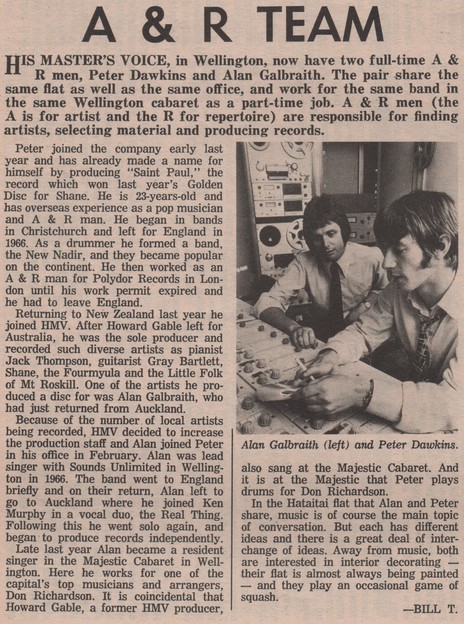
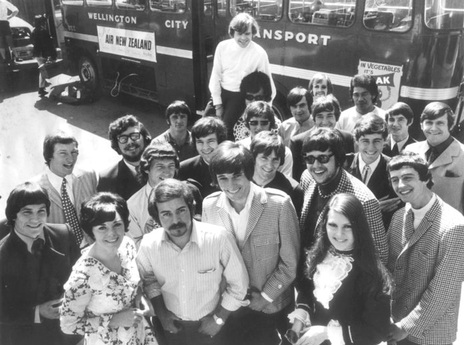
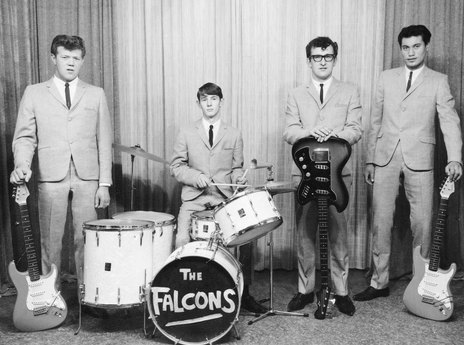
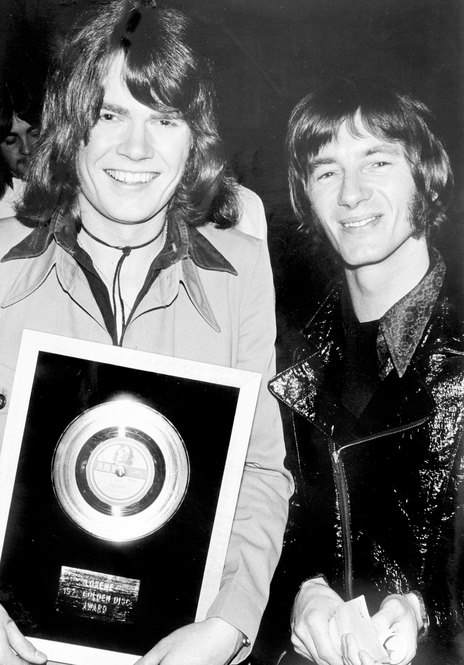
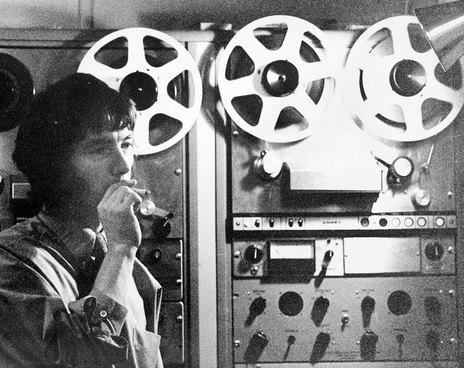
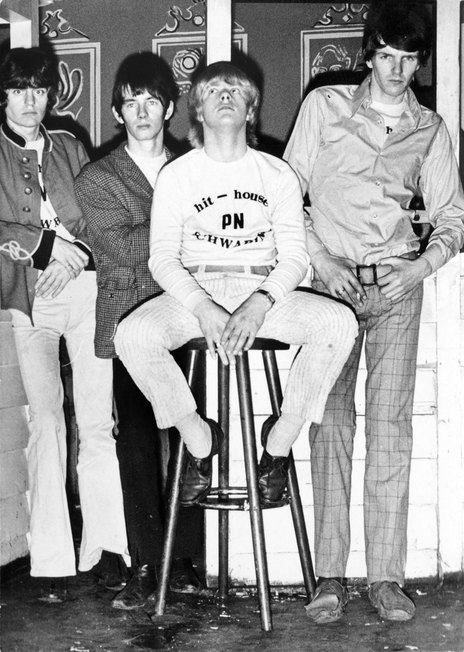
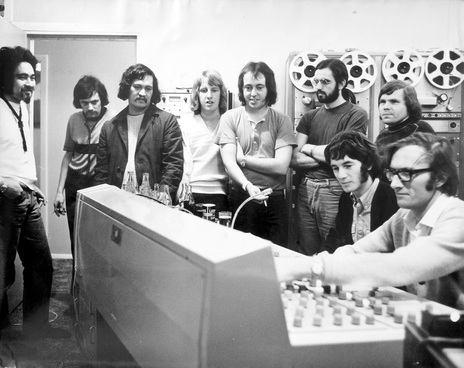
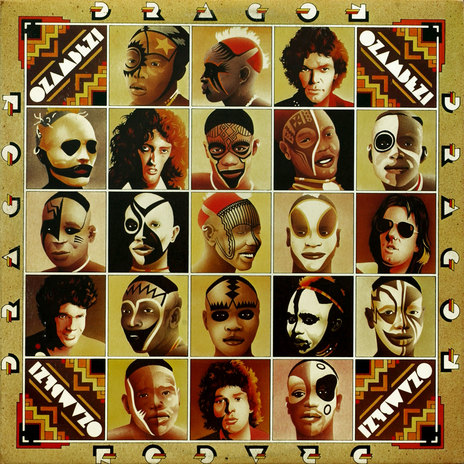
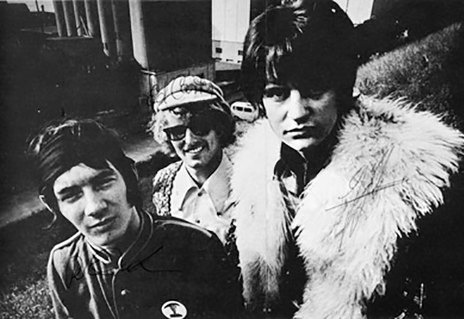
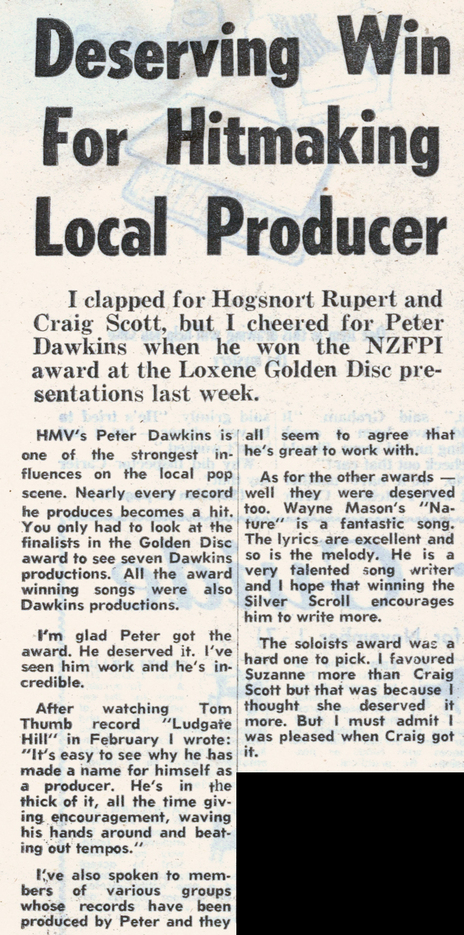
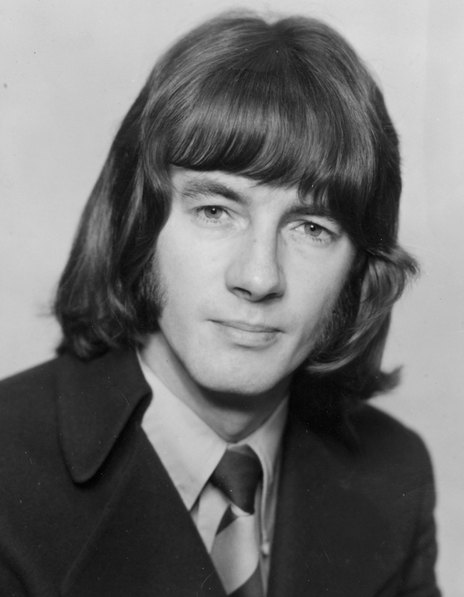
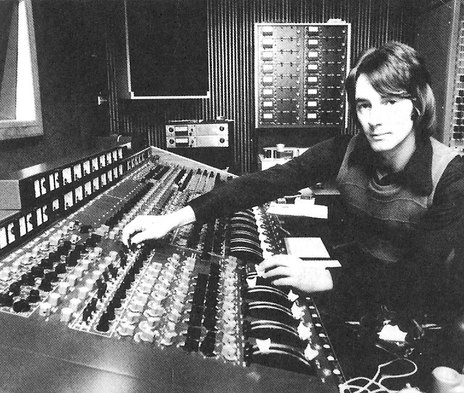
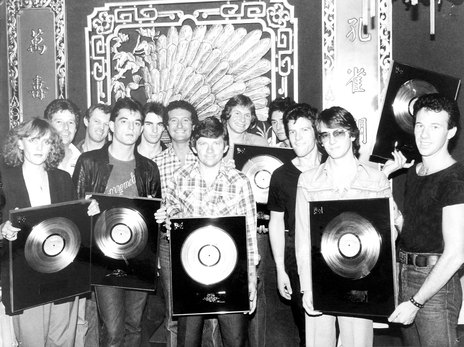
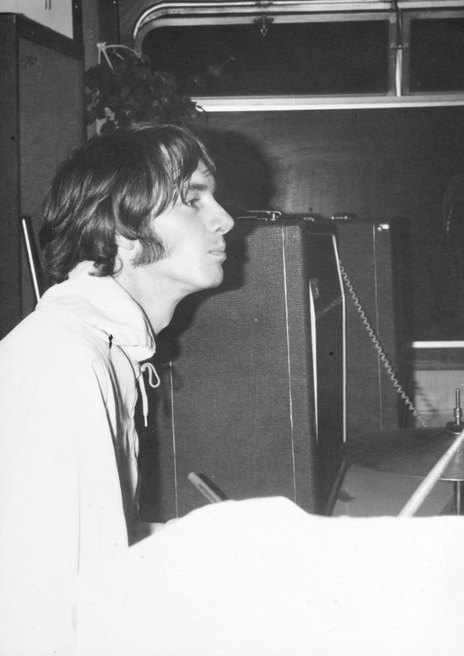
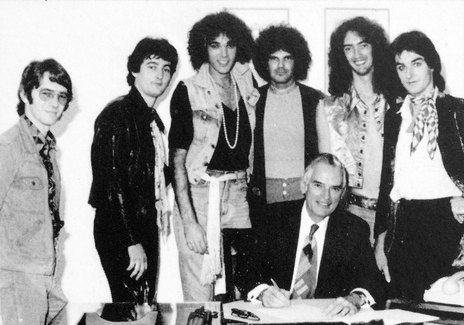
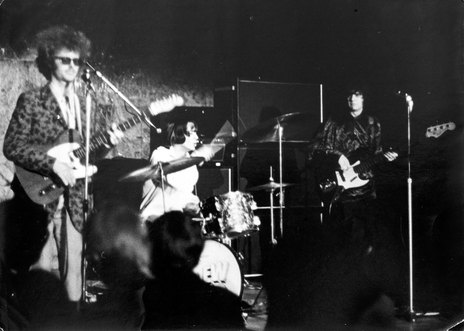
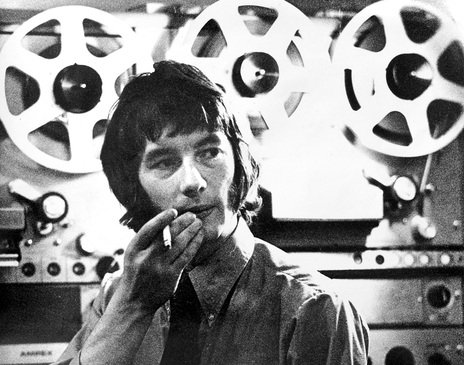
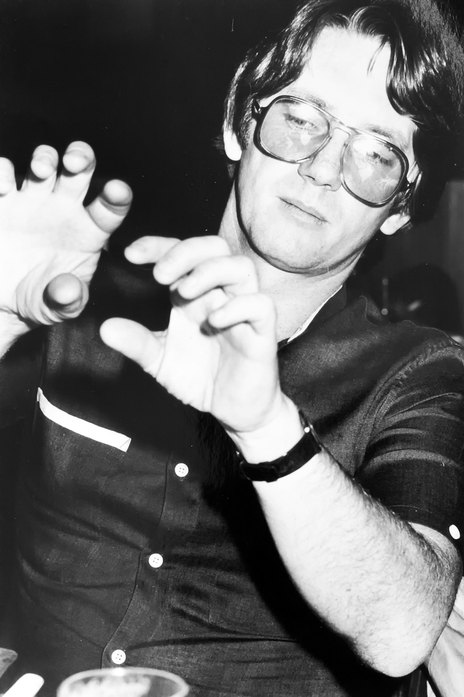
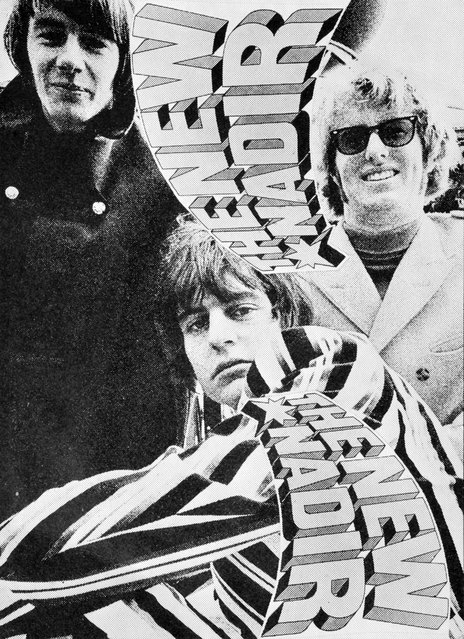
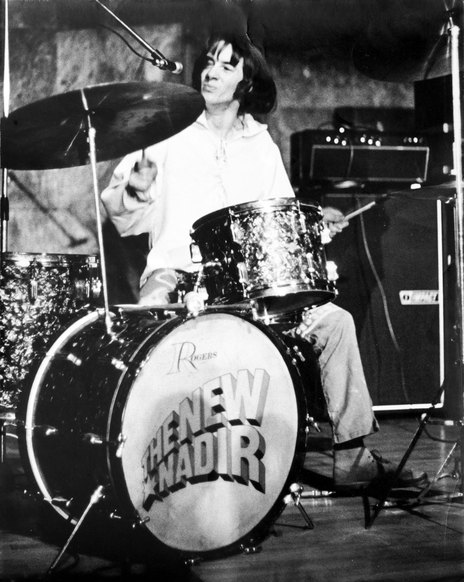
Visit our sister site
NZ On ScreenMade with funding from
NZ On Air